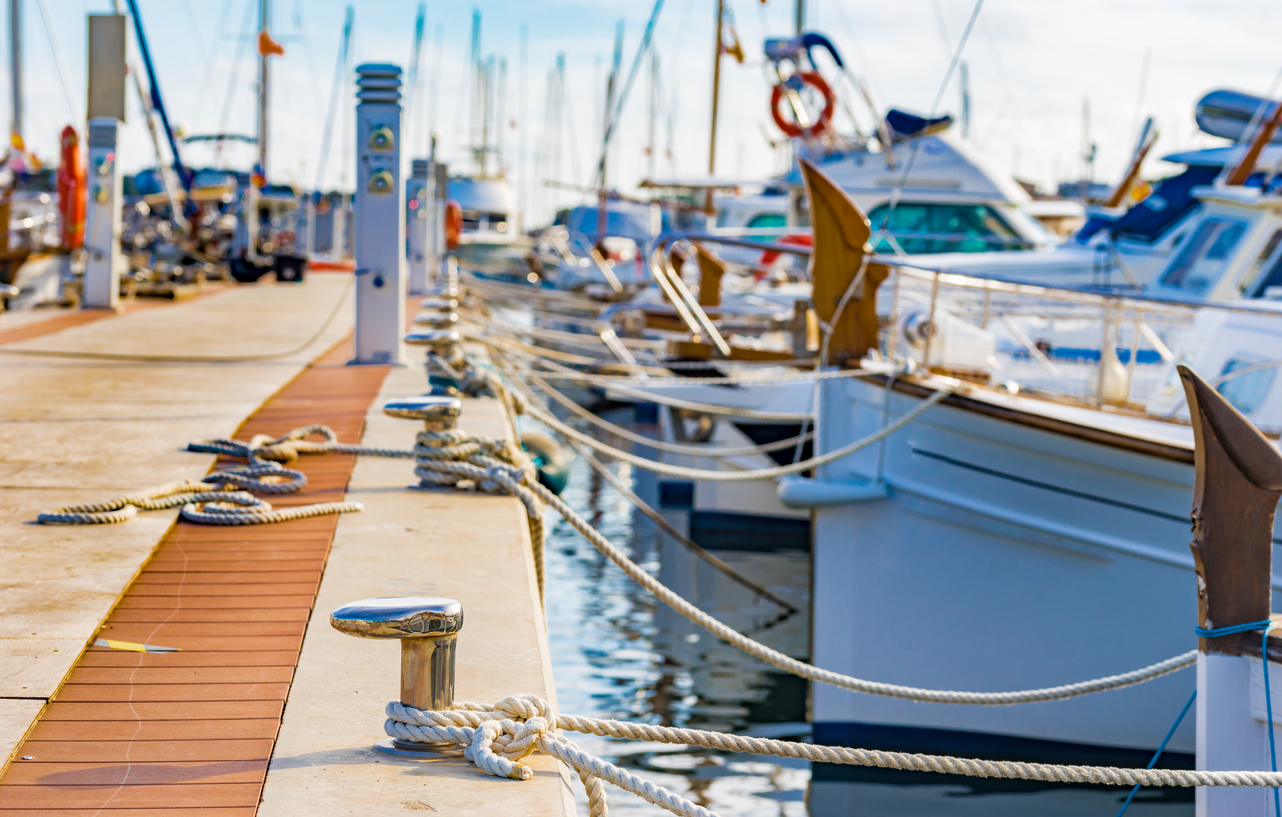
Electric Shock Drowning in Marinas and Commercial Docks
March 10, 2020
From an early age, most of us have learned that the combination of electricity and water can be dangerous. Unfortunately, electricity is part of our daily lives, and is crucial to nearly every business operation. In marinas, yacht clubs, and commercial docks, electricity powers equipment from dockside fueling systems to overhead lighting, security cameras, and individual vessels relying on shore power. Some of these facilities may offer rental craft for use by customers. Personal watercraft rental insurance is designed to provide coverage for a wide range of risks for these business owners. To protect themselves and their customers, water-focused facilities must understand the risks of mixing electricity and water, especially as it relates to a phenomenon known as Electric Shock Drowning, or ESD.
What is Electric Shock Drowning?
Electric Shock Drowning, commonly referred to as ESD, is a tragic occurrence when someone in the water experiences an electric shock that leads to temporary paralysis. Unable to swim or to stay afloat as a result of the electrical current’s paralyzing effect, the individual succumbs to drowning. According to the Electric Shock Drowning Prevention Association, the vast majority of incidents have occurred in freshwater public and private marinas, docks, and similar waterfront facilities, including personal watercraft rental operations. Children swimming in or near these facilities are the most common victims, although ESD can strike anyone of any age.
Unlike electrocution hazards on land where the electrical current must complete a circuit to cause injury or death, the water itself is energized in ESD through wiring or electrical components in contact with the water body. It can be hard to pinpoint the source of the electrical current, and because the victim drowns, it may be difficult or impossible to know that electricity was the ultimate cause. As a result, ESD is either under- or unreported in many cases. ESD is known as the “silent killer” because there is no sign that electrical currents are present – no telltale indications that can help people avoid energized water.
What Are the Causes of Electric Shock Drowning?
ESD is a result of electrical currents being discharged into a water body. Because commercial marinas and docks rely on a wide range of electrically-powered equipment, the sources of these electrical currents may vary. Potential sources of electricity leading to ESD include:
- Frayed or damaged wiring
- Wires from dockside lighting
- Electrically-powered fuel pumping systems
- Boat lifts and cranes
- Electrical service/transmission lines serving the marina facility
Another potential source of currents occurs when electrical faults are present aboard vessels receiving shore power. Boats get their shore power from a power pedestal, which is connected to a supply transformer. The transformer is grounded, and the boat’s electrical wiring is also grounded. If there is a fault anywhere within this network of wires, such as a loose or disconnected grounding wire, intermittent currents can discharge into the water. These currents may only be brief, such as when a heater or air-conditioning system aboard the boat is being operated.
Preventing Electric Shock Drowning
Companies that rent watercrafts or operate marina facilities have many options when it comes to protecting their businesses and their customers from a range of risks. Personal watercraft rental insurance and/or commercial marina insurance serves as the foundation for risk management. Even with these protections, business owners should be aware of the threat of ESD and must take preventative steps. These steps include:
- Disallowing swimming in or near docks or within marina facilities if possible.
- Posting signage warning of the dangers of ESD.
- Installing electrical equipment in compliance with the National Electric Code, such as ground-fault circuit interruption (GFCI) receptacles, isolation transformers for shore power delivery, and equipment leakage circuit interrupter (ELCI) protection.
- Inspecting all electrical wiring for damage like cracks, fraying, missing or loose connections, or kinks.
- Training marina staff on what to do in cases of emergency, including ESD. Entering the water to rescue someone experiencing an electrical shock can put the would-be rescuer in the same danger.
- Ensuring that marinas and docks are equipped with appropriate life rings and safety ladders.
With these preventative measures, and with the protection of personal watercraft rental insurance, commercial marina and vessel rental companies can continue to deliver the services that their boating clientele desires. A culture of safety is key to every marina operation. ESD is deadly, but with the right equipment and training, these tragedies can be avoided, ensuring a safe time on the water for your customers.
About Merrimac Marine Insurance
At Merrimac Marine, we are dedicated to providing insurance for the marine industry to protect your clients’ business and assets. For more information about our products and programs, contact our specialists today at (800) 681-1998.
